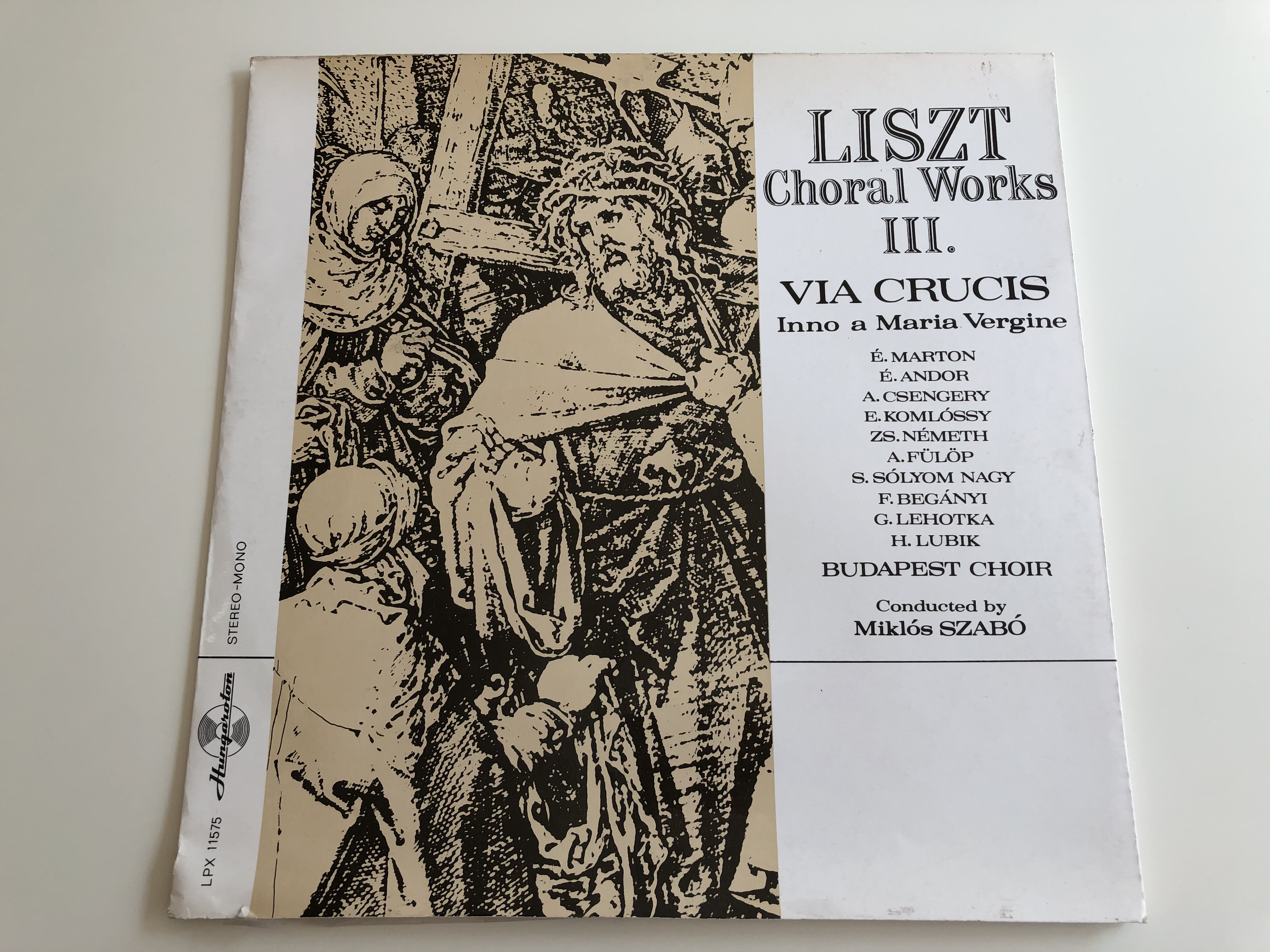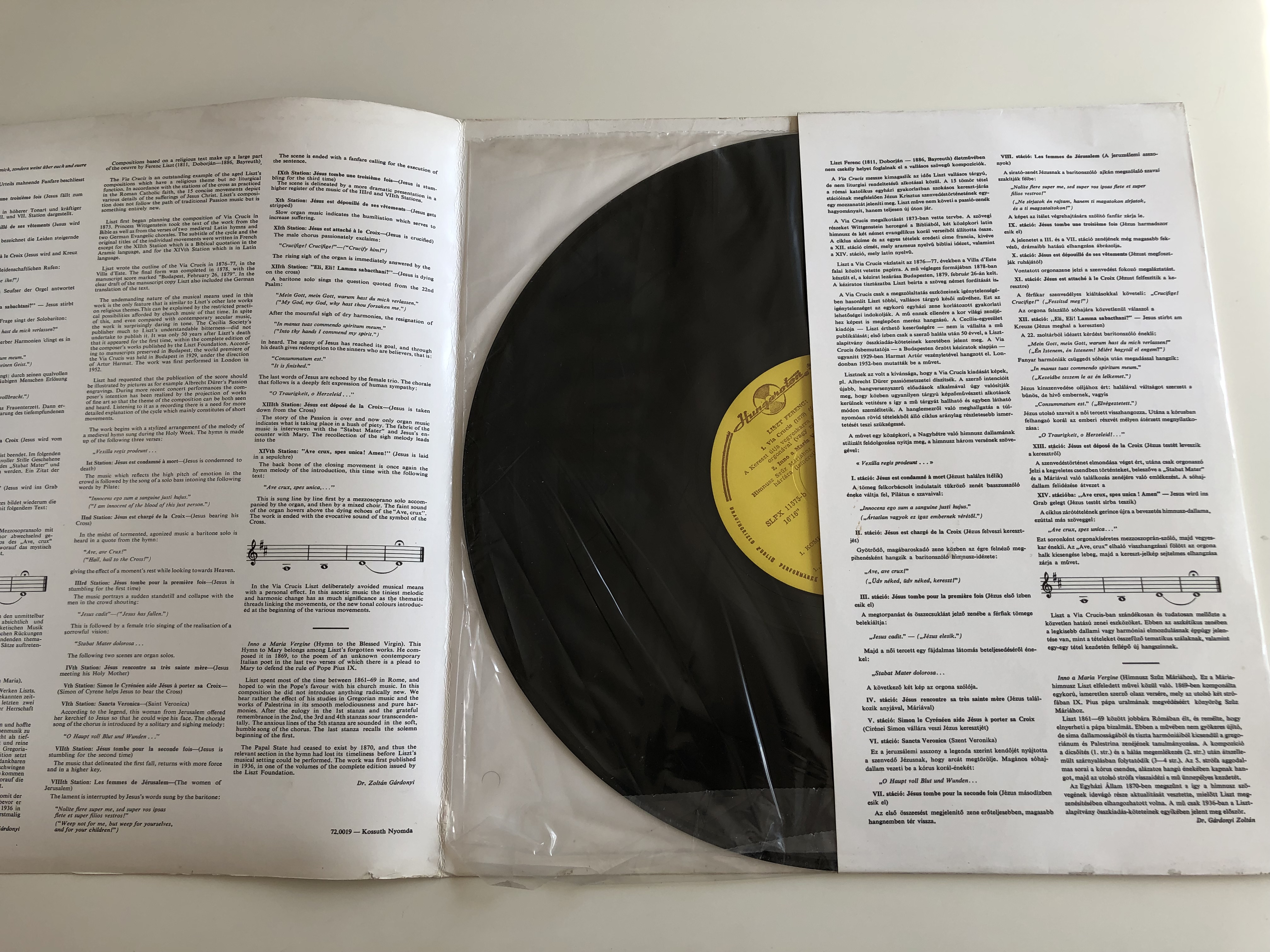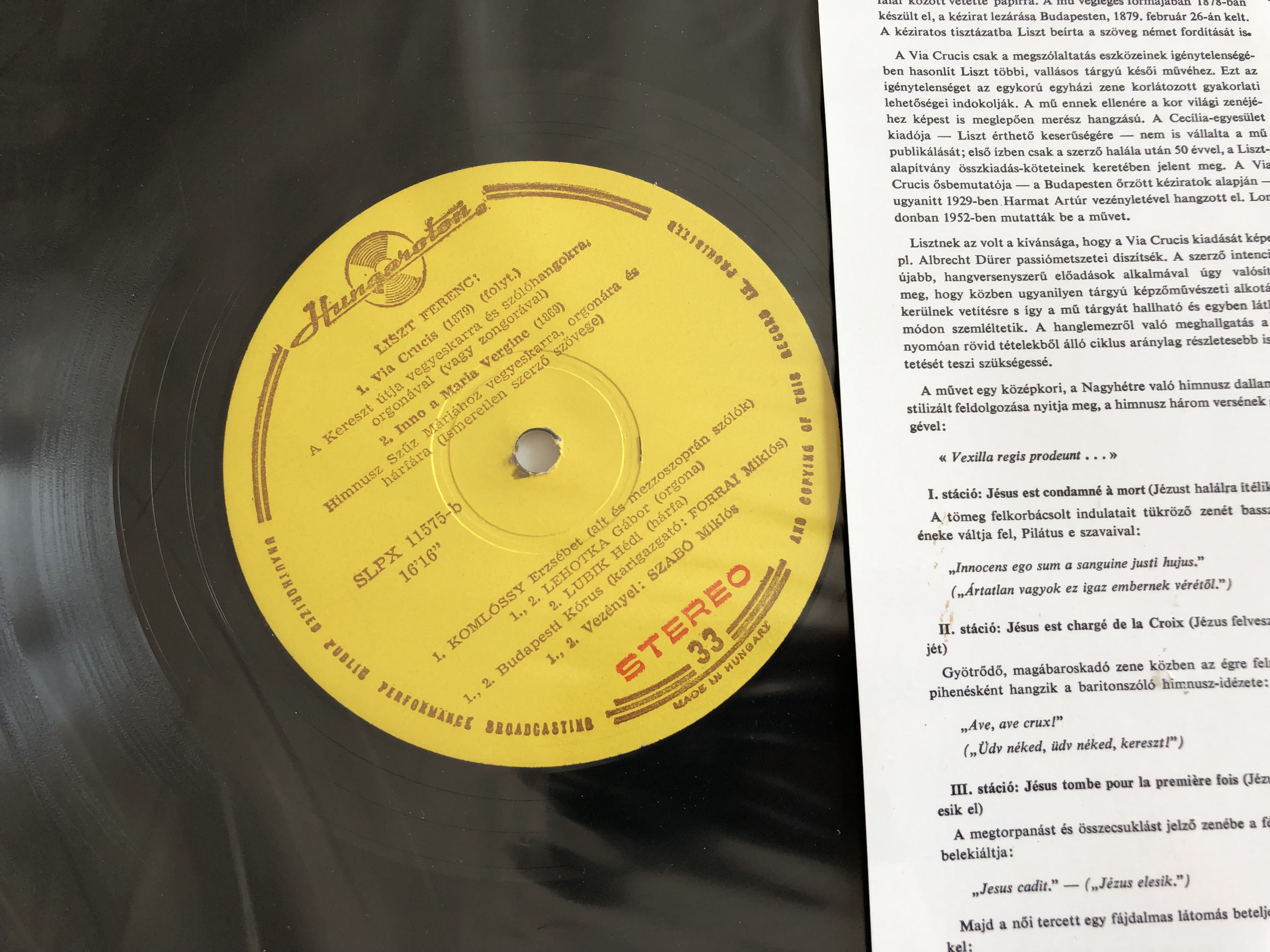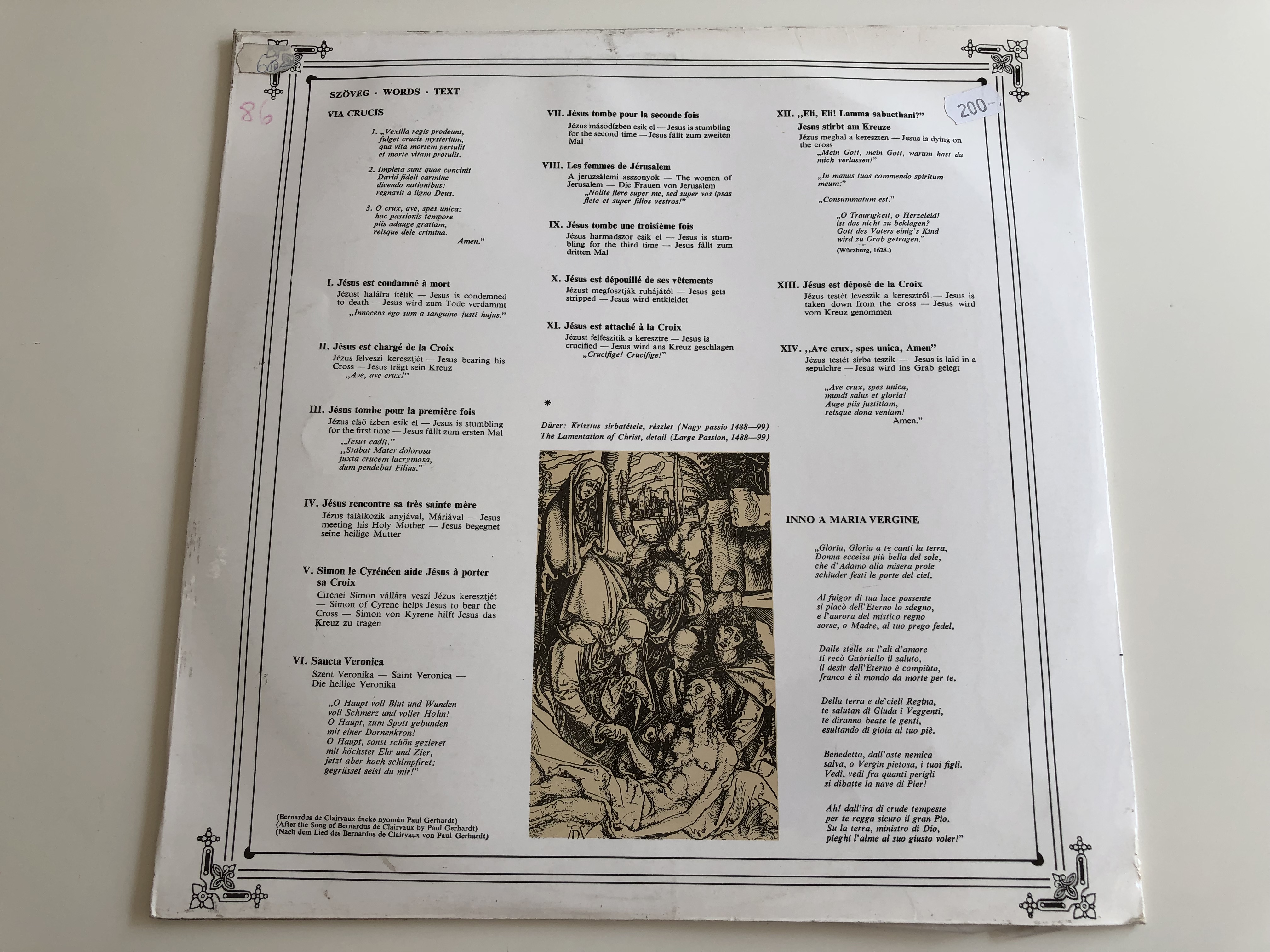Description
Liszt - Choral Works III. Via Crucis / Inno A Maria Vergine / É. Marton, É. Andor, A. Csengery, E. Komlóssy, Zs. Németh, S. Sólyom Nagy / Budapest Choir / Conducted: Miklós Szabó / HUNGAROTON LP STEREO - MONO
LPX 11575
The work follows the fourteen stations of Christ!
Tracklist:
| A | Via Crucis | |
| B1 | Via Crucis (Cont.) | |
| B2 | Inno A Maria Vergine |
- Baritone Vocals – Sándor Sólyom Nagy
- Bass Vocals – Ferenc Begányi
- Choir – Budapest Choir
- Chorus Master – Miklós Forrai
- Composed By – Liszt Ferenc
- Conductor – Miklós Szabó
- Contralto Vocals – Zsuzsa Németh
- Harp – Hédy Lubik
- Mezzo-soprano Vocals, Contralto Vocals – Erzsébet Komlóssy
- Organ – Gábor Lehotka
- Soprano Vocals – Adrienne Csengery, Éva Andor, Éva Marton
- Tenor Vocals – Attila Fülöp
Via crucis (Die 14 Stationen des Kreuzwegs) is a work for mixed choir, soloists and organ (also harmonium or piano) by Franz Liszt. The work is devoted to the Stations of the Cross. It is one of the last works of Liszt.
Liszt started the composition of this work in the fall of 1878 when he stayed in Rome and ended it in February 1879 in Budapest. There are three sources of the work available: the first sketches in Weimar, the manuscript of the whole work in Budapest and a copy of it in Weimar. The original version was set with accompaniment by organ. Liszt made later a version with piano.
The work is a special case in the oeuvre of Liszt, especially because it is a work of great serenity. The work is also special because it reaches the limits of the till then prevailing tonality. The work combines unison songs (Stations I and XIV) with Lutheran chorales (Stations IV and XII), and chorales inspired by Bach's chorales (Station VI), whereas other stations consist of solo organ (or piano). Liszt self wanted to perform the work in the Colosseum, with accompaniment by harmonium.


































